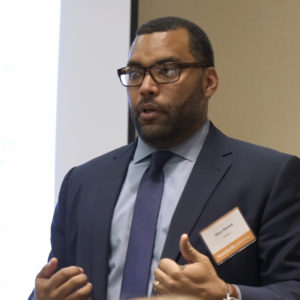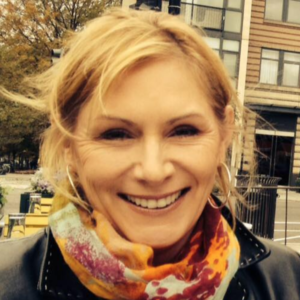We recently sat down with Marc Etienne, Jose Guadarrama, and Norka Padilla to find out how they define equity and what it means in their system and classroom.

Marc Etienne – Executive Director for Principal Support and Accountability for Baltimore City Public Schools
As the executive director for principal support and accountability for Baltimore City Public Schools, I spend a lot of time thinking about equity in schools. I have arrived at two tenets:
1. Equity means every student and adult in the school building receives what they need (as distinct from what they might want) to be successful.
2. In order to give students and teachers what they need, you have to know your people. When everyone knows one another and what their needs are, it becomes much easier for schools to employ social emotional strategies to address conflict, foster inclusion, and ensure that students have equal opportunities.
You have to ensure, at every level, that students and teachers have access to the resources they need to progress to the next level. This means 8th graders having access to Algebra I. It means kindergarteners being ready for first grade—knowing how to tie their shoes, how to spell their names—hitting those benchmarks. It means schools having air conditioning. It means parents having access to the syllabi that their children are taught from. It means teachers and students having access to resources outside their curriculum if they want them. It’s about access, and restricting access stunts growth and motivation. If students have access, that means equity for everyone.

Jose Guadarrama – Manager of Primary English Language Arts – New Orleans
Equity plays a crucial role in my work as I direct the primary literacy curriculum across five schools in New Orleans. To me, equity means making sure that gender, ethnic origin, family socio-economic background, and equivalent circumstances do not interfere with a student achieving their academic potential.
First and foremost, this means getting high-quality and aligned curriculum to our teachers and making sure that curriculum is used in a way that allows students to learn foundational skills whilst grappling with grade-level texts. And it means helping teachers hone mindsets and heartsets that accelerate learning. Teachers believe in the endless potential of students. As a leader, I need to model, support, and develop teachers’ growth mindset about their own practice. As we move toward reading grade-level complex texts in classrooms, I need to lead teachers in making instructional moves that support student meaningful access to the books we read, as opposed to mitigating a texts’ complexity by overly or prematurely scaffolding.
I’ve noticed how easy it is to get stuck in the minutiae of my work, be it developing a scope and sequence or preparing a pitch for school directors. Taking a step back helps me ground the work in purpose as opposed to letting it get bogged down by process.
No student’s circumstances should get in the way of materials we put in front of them.

Norka Padilla – English as a Second Language Instructional Specialist – Maryland
As an English as a Second Language Instructional Specialist, I support schools’ work with English learners, data analysis, and professional development that ensures that English learners have access to rigorous core classes for graduation.
Equity in schools is about both students and adults. It is the goal of practices, structures, and systems that ensure every student has access to grade-level cognitive demand. And equity demands that we as a system provide teachers with the skills and expertise they need to do that work so that students have a trajectory into a promising future that they choose. It means enabling a certain quality of life for students after they graduate.
There’s a lot of pushback. It comes in the form of phrases like “they’re not ready” or “they can’t.” These words are spoken preemptively. Who are we to say a child can or cannot do something if we’ve never given them the opportunity to do it?
It’s not impossible. When you look at schools that have closed the gap between English learners and the rest of the student body, you notice patterns. There were provisions, and quality professional development for teachers, with a focus on building robust content expertise and curricular knowledge. When such an environment is set up for teachers, students learn at high levels.
I put this into effect two ways:
- Putting English learners in classes they deserve to be in, with the same rigor as other students. In order to develop complex language, you have to interact with complex language.
- Implementing an aligned curriculum that gives students access to those complex texts without over-scaffolding. We also allow for productive struggle.
Equity is about enabling students. It is about building a citizenry, one day, that is resistant to claims that lack evidence, a citizenry able to engage in critical analysis and to understand the world’s problems well enough to conceive of new ways to solve them. When students are able to independently grapple and think in an open space without support, they can do anything.
—
Looking for more resources?
Marc, Jose, and Norka recommend the following resources to further your learning:
Other People’s Children by Lisa Delpit
The Dreamkeepers by Gloria Ladson-Billings
Blog on Literacy by Timothy Shanahan
Teaching Reading to Black Adolescent Males by Dr. Alfred Tatum